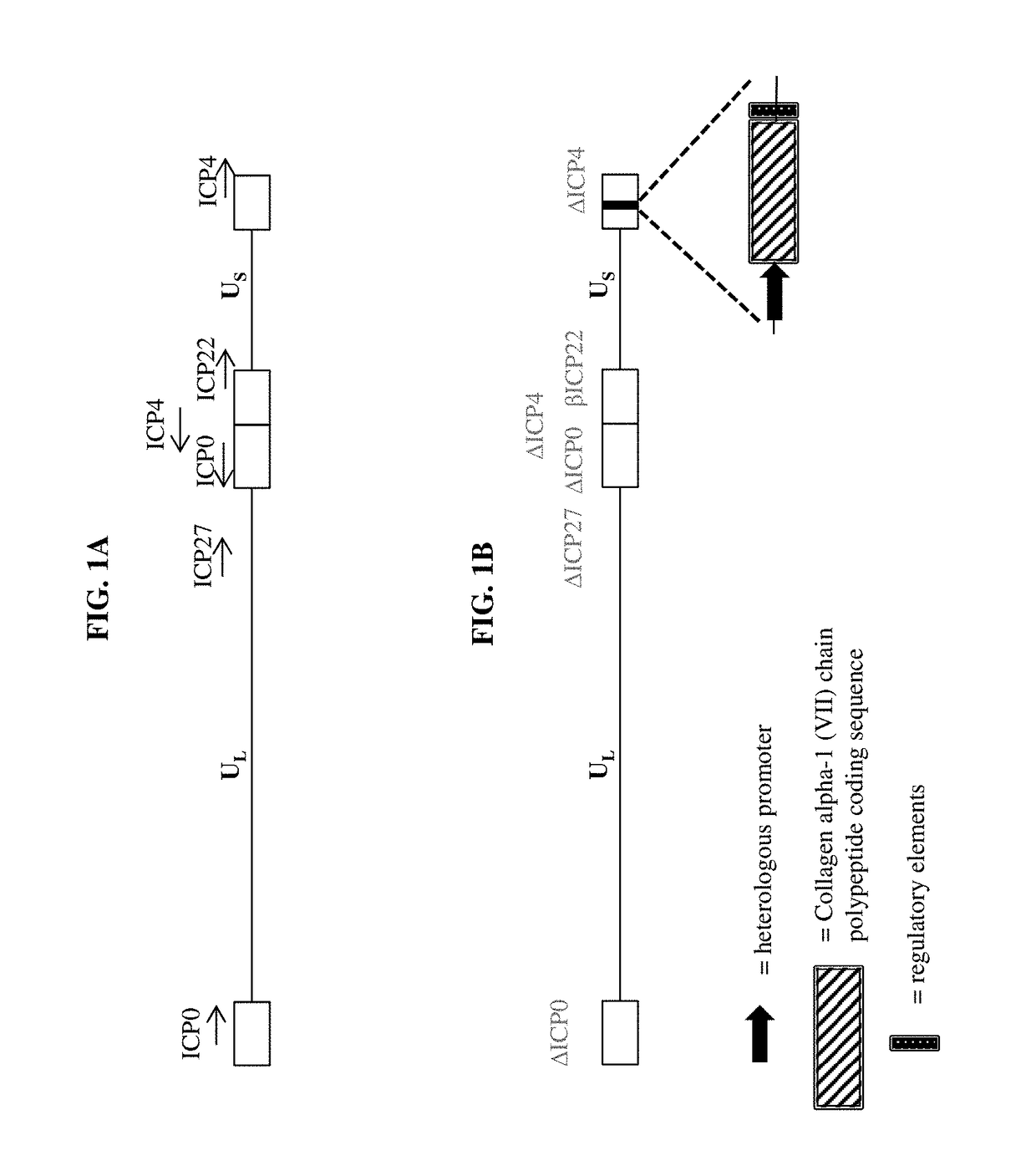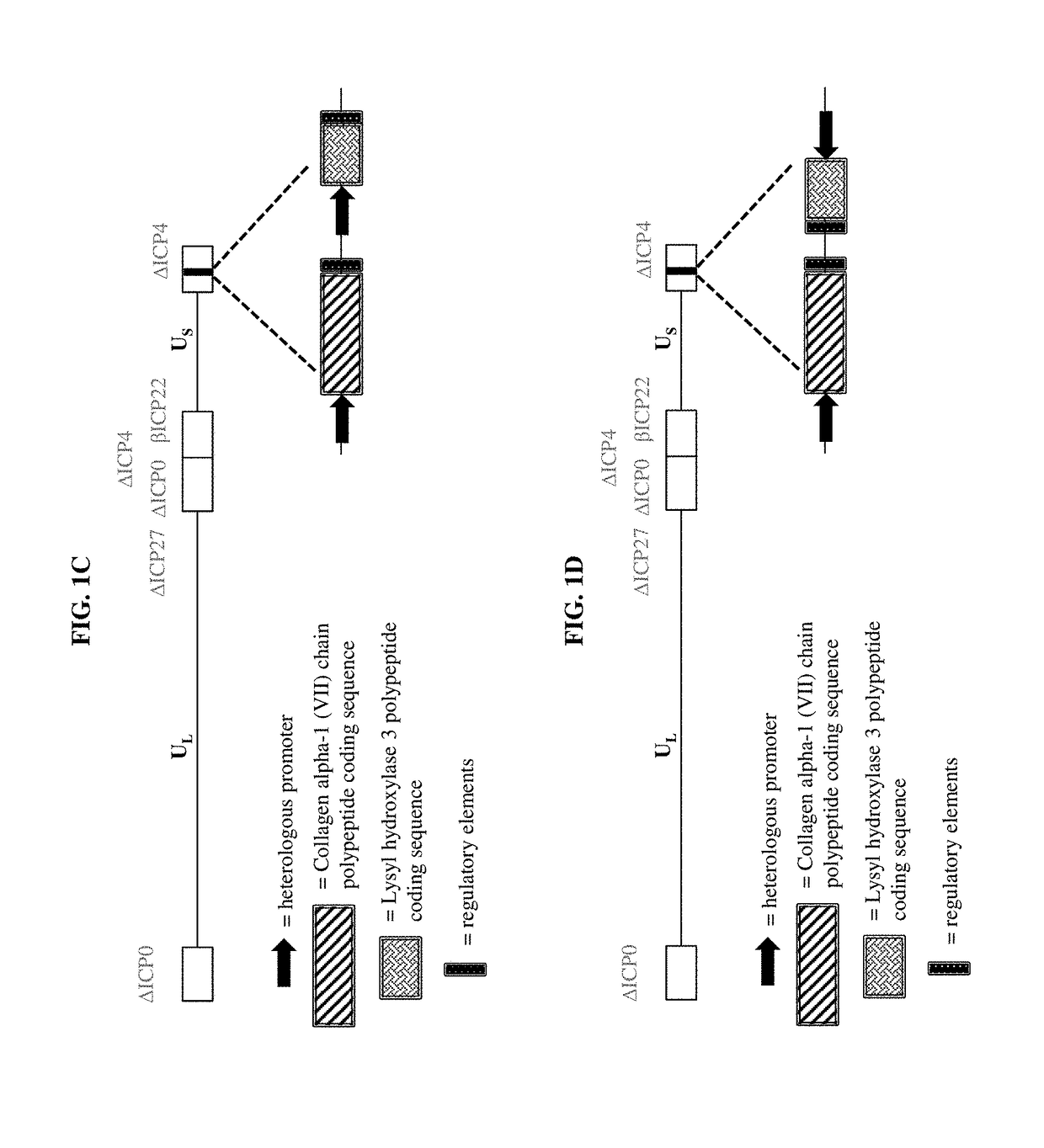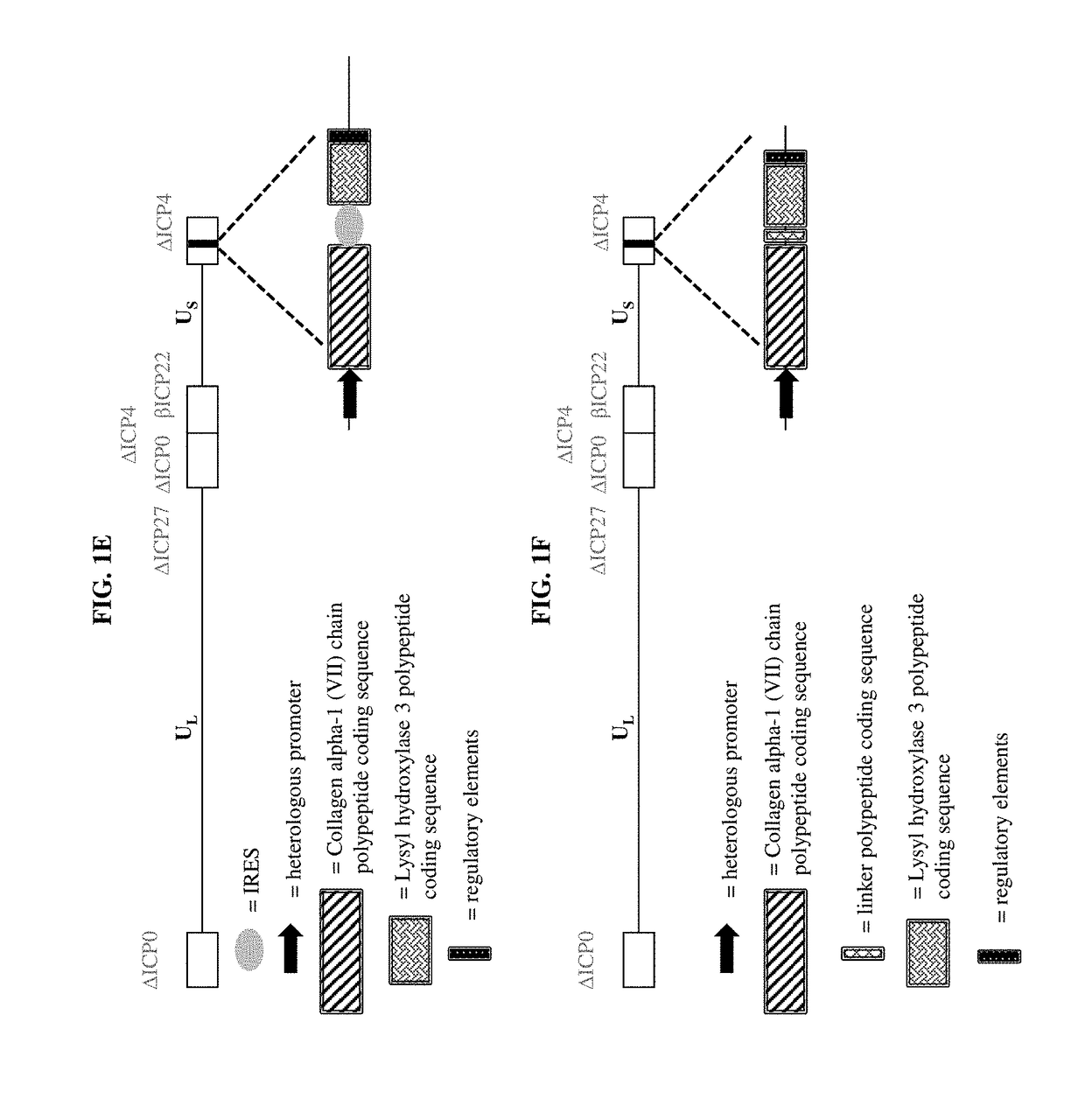Compositions and methods for the treatment of wounds, disorders, and diseases of the skin
a technology for disorders, wounds, and skin, applied in the direction of drug compositions, enzymology, viruses, etc., can solve the problems of difficult to chew and swallow food, chronic malnutrition, and excessive scarring, and achieve the effects of increasing, increasing, and/or supplementing the formation of hydroxylysine residues, enhancing, increasing, and/or supplementing the formation of anchoring fibrils of subjects
- Summary
- Abstract
- Description
- Claims
- Application Information
AI Technical Summary
Benefits of technology
Problems solved by technology
Method used
Image
Examples
example 1
Generating Modified Herpes Simplex Virus Vectors, and Producing / Isolating Virus Containing the Vectors
[0429]To make modified herpes simplex virus genome vectors capable of expressing one or more transgenes in a target mammalian cell, a herpes simplex virus genome (FIG. 1A) is modified to inactivate the immediate early genes ICP0, ICP4, and ICP27, while the immediate early gene ICP22 is modified to include a heterologous, inducible promoter. This decreases the toxicity of the genome in mammalian cells. Next, a cassette is inserted into the modified herpes virus genome by restriction cloning. The cassette contains a heterologous promoter capable of expressing a transgene in a target mammalian cell. The promoter is operably linked to the nucleic acid sequence encoding a Collagen alpha-1 (VII) chain polypeptide, as well as downstream regulatory elements (FIG. 1B) ensuring proper production of the mRNA. Alternatively, the cassette includes two transgenes, each of which has its own hetero...
example 2
Rescuing Col7 Expression with Replication Defective HSV-1
[0435]The following example describes the construction of a replication defective herpes simplex type-1 virus modified to express the human COL7A1 gene, and use of such a viral vector to rescue several defects observed in cells isolated from RDEB patients.
[0436]Methods
Cells and Cell Culture
[0437]Normal and RDEB human dermal fibroblasts and keratinocytes were isolated as described previously (NG, Y. Z. et al. (2012) Cancer Res. 72: 3522-3534; Rheinwald, J. G. and Green, H. (1975) Cell 6: 331-42). Cells were cultured according to standard techniques.
Construction of KB103
[0438]The KB103 vector was generated from D3GFP, a replication-defective HSV-1 vector backbone harboring GFP in place of the viral ICP4. The sequence of the GFP in D3GFP was replaced with the coding sequence of human COL7A1 using a transfer plasmid by cloning COL7A1 into the EcoRI site of the ICP4 recombination plasmid pSASB3. A mixed transfection / infection of th...
example 3
In Vivo Col7 Expression Using Replication Defective HSV-1
[0458]The following example describes the use of a replication defective herpes simplex type-1 virus (modified to contain a human COL7A1 transgene) as a delivery vehicle for expression of human Col7 protein in vivo.
Methods
Construction and Purification of KB103
[0459]The KB103 virus was constructed and purified as described in Example 2 above.
Viral Infections
[0460]KB103 virus was delivered to wild-type Balb / c or skhl-elite mice by intradermal injection as follows: each animal was injected once at 2-4 sites within the flank region of the animal with 1×108 plaque forming units (PFU) of virus / site in a volume of 50 μL. Animals were sacrificed 48 hours post KB103 administration, and the inject sites were harvested and processed for either real time qPCR or immunofluorescence analysis.
[0461]For qPCR analysis, skin tissue was dissected down to the fascia using a 6 mm punch biopsy tool. The biopsy was bisected into two pieces, and each...
PUM
| Property | Measurement | Unit |
|---|---|---|
| volume | aaaaa | aaaaa |
| volume | aaaaa | aaaaa |
| diameter | aaaaa | aaaaa |
Abstract
Description
Claims
Application Information
 Login to View More
Login to View More - R&D
- Intellectual Property
- Life Sciences
- Materials
- Tech Scout
- Unparalleled Data Quality
- Higher Quality Content
- 60% Fewer Hallucinations
Browse by: Latest US Patents, China's latest patents, Technical Efficacy Thesaurus, Application Domain, Technology Topic, Popular Technical Reports.
© 2025 PatSnap. All rights reserved.Legal|Privacy policy|Modern Slavery Act Transparency Statement|Sitemap|About US| Contact US: help@patsnap.com



